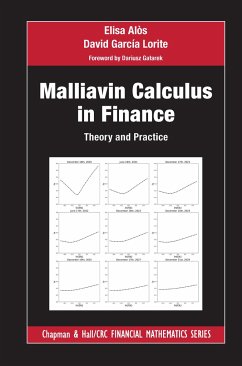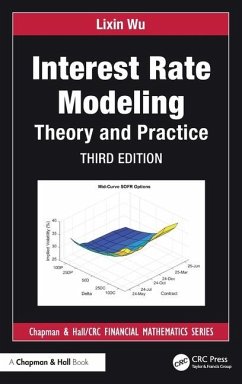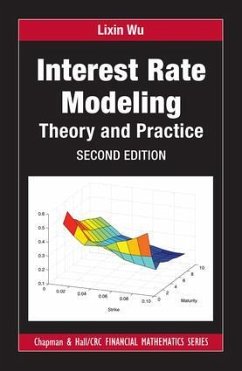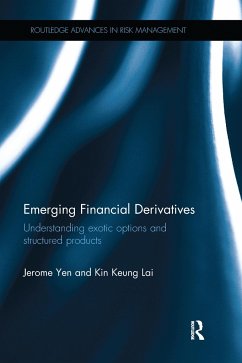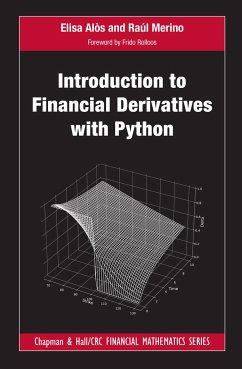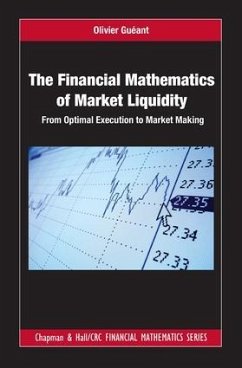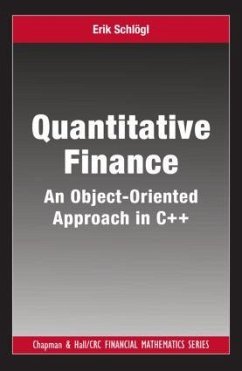
Malliavin Calculus in Finance
Theory and Practice
Versandkostenfrei!
Versandfertig in über 4 Wochen
59,99 €
inkl. MwSt.
Weitere Ausgaben:

PAYBACK Punkte
30 °P sammeln!
Malliavin Calculus in Finance: Theory and Practice aims to introduce the study of stochastic volatility (SV) models via Malliavin Calculus.Malliavin calculus has had a profound impact on stochastic analysis. Originally motivated by the study of the existence of smooth densities of certain random variables, it has proved to be a useful tool in many other problems. In particular, it has found applications in quantitative finance, as in the computation of hedging strategies or the efficient estimation of the Greeks.The objective of this book is to offer a bridge between theory and practice. It sh...
Malliavin Calculus in Finance: Theory and Practice aims to introduce the study of stochastic volatility (SV) models via Malliavin Calculus.
Malliavin calculus has had a profound impact on stochastic analysis. Originally motivated by the study of the existence of smooth densities of certain random variables, it has proved to be a useful tool in many other problems. In particular, it has found applications in quantitative finance, as in the computation of hedging strategies or the efficient estimation of the Greeks.
The objective of this book is to offer a bridge between theory and practice. It shows that Malliavin calculus is an easy-to-apply tool that allows us to recover, unify, and generalize several previous results in the literature on stochastic volatility modeling related to the vanilla, the forward, and the VIX implied volatility surfaces. It can be applied to local, stochastic, and also to rough volatilities (driven by a fractional Brownian motion) leading to simple and explicit results.
Features
Intermediate-advanced level text on quantitative finance, oriented to practitioners with a basic background in stochastic analysis, which could also be useful for researchers and students in quantitative finance
Includes examples on concrete models such as the Heston, the SABR and rough volatilities, as well as several numerical experiments and the corresponding Python scripts
Covers applications on vanillas, forward start options, and options on the VIX.
The book also has a Github repository with the Python library corresponding to the numerical examples in the text. The library has been implemented so that the users can re-use the numerical code for building their examples. The repository can be accessed here: https://bit.ly/2KNex2Y.
Malliavin calculus has had a profound impact on stochastic analysis. Originally motivated by the study of the existence of smooth densities of certain random variables, it has proved to be a useful tool in many other problems. In particular, it has found applications in quantitative finance, as in the computation of hedging strategies or the efficient estimation of the Greeks.
The objective of this book is to offer a bridge between theory and practice. It shows that Malliavin calculus is an easy-to-apply tool that allows us to recover, unify, and generalize several previous results in the literature on stochastic volatility modeling related to the vanilla, the forward, and the VIX implied volatility surfaces. It can be applied to local, stochastic, and also to rough volatilities (driven by a fractional Brownian motion) leading to simple and explicit results.
Features
Intermediate-advanced level text on quantitative finance, oriented to practitioners with a basic background in stochastic analysis, which could also be useful for researchers and students in quantitative finance
Includes examples on concrete models such as the Heston, the SABR and rough volatilities, as well as several numerical experiments and the corresponding Python scripts
Covers applications on vanillas, forward start options, and options on the VIX.
The book also has a Github repository with the Python library corresponding to the numerical examples in the text. The library has been implemented so that the users can re-use the numerical code for building their examples. The repository can be accessed here: https://bit.ly/2KNex2Y.





